Tucked away in Bihar’s remote northwest corner, Valmiki National Park beckons nature enthusiasts and wildlife aficionados. This sprawling sanctuary, named for the revered sage Valmiki who authored the epic Ramayana, invites visitors on a serene escape into the untamed. Spanning over 880 square kilometers, the park unveils a diverse tapestry of ecosystems. Lush, vibrant forests teeming with life transition into open grasslands, while meandering rivers carve paths through the landscape and wetlands bask under the sun’s golden embrace.
How to reach:
Taking Flight:
Soaring into Bihar, your journey to Valmiki National Park can begin at Jay Prakash Narayan International Airport in Patna. This airport, roughly 275 kilometers away, offers convenient connections for travelers. Taxis and buses are readily available to whisk you towards the park entrance.
For a potentially closer option, consider Gorakhpur Airport in Uttar Pradesh, situated about 100 kilometers from the park. This could shave off valuable travel time, allowing you to embrace the wilderness sooner.
Riding the Rails:
For a more traditional travel experience, Valmiki Nagar Railway Station beckons. This station boasts connections to major cities like Patna, Muzaffarpur, and Gorakhpur, making train travel a viable option. Upon arrival, hop on a taxi or auto-rickshaw for the final leg of your journey to the park entrance.
Hitting the Road:
Bihar and neighboring states offer a network of roads leading to Valmiki National Park. Here are some popular routes for your exploration:
- Patna: Embark on a scenic countryside drive, following the NH27 highway via Muzaffarpur and Bettiah. This route spans approximately 275 kilometers.
- Gorakhpur: This city sits roughly 100 kilometers from the park. Take NH24 and NH727 for a journey that lasts around 2-3 hours by car.
- Muzaffarpur: Buckle up for a 200-kilometer adventure along NH527C and NH27 highways.
Best time to visit:
(October to March)
Fall and winter paint Valmiki National Park in a delightful palette of comfortable temperatures, ranging from a refreshing 8°C to a balmy 22°C. This period beckons nature enthusiasts with ideal conditions for trekking and exploring the park’s diverse ecosystems. But the pleasant weather isn’t the only advantage. The dry season brings with it sparser vegetation, making wildlife viewing a spectacular affair. Imagine spotting a majestic Bengal tiger or a sleek leopard basking in the golden sunlight! Birdwatchers, take note!
(Monsoon Season: July to September)
While the monsoon season ushers in moderate to heavy rainfall, potentially turning some areas muddy and challenging to navigate, it also breathes life into the park, transforming it into a lush emerald wonderland. Photographers, rejoice! The vibrant greenery explodes in every direction, creating a scene straight out of a postcard.
(Summer Season: April to June)
Summer brings the heat! Temperatures can soar up to 40°C, making extensive hikes and outdoor activities less than ideal. However, for wildlife enthusiasts, this season offers a unique opportunity. Animals tend to congregate near water sources to escape the scorching heat, making them easier to spot on safaris.
Attractions:
Wildlife Safaris:
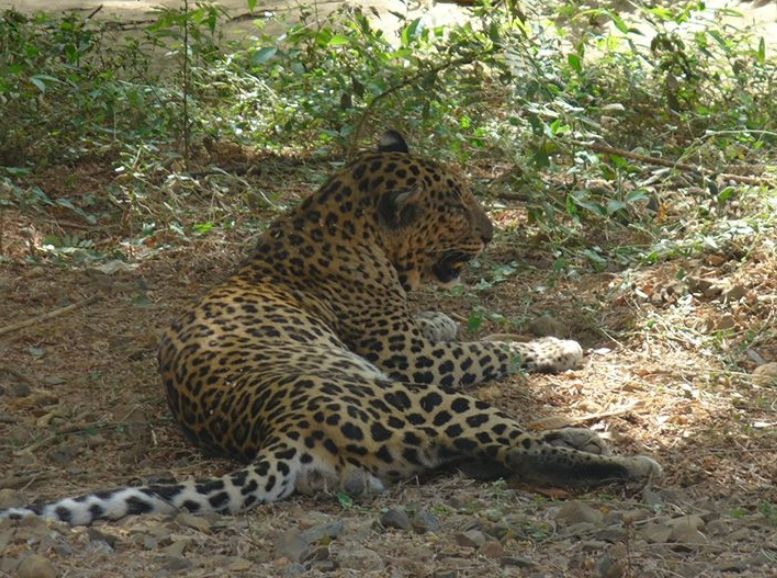
Embark on an exhilarating wildlife safari to unveil the secrets of Valmiki National Park. Explore diverse landscapes – dense, echoing forests, sun-dappled grasslands, and serene riverbanks teeming with life – in a comfortable jeep. Expert naturalists lead the way, maximizing your chances of spotting majestic Bengal tigers, elusive leopards, and gentle giants like elephants. Keep an eye out for a dazzling display of deer too! Early mornings and late afternoons are prime wildlife viewing times. For a truly unforgettable encounter, opt for an elephant safari.
Valmiki Tiger Reserve:
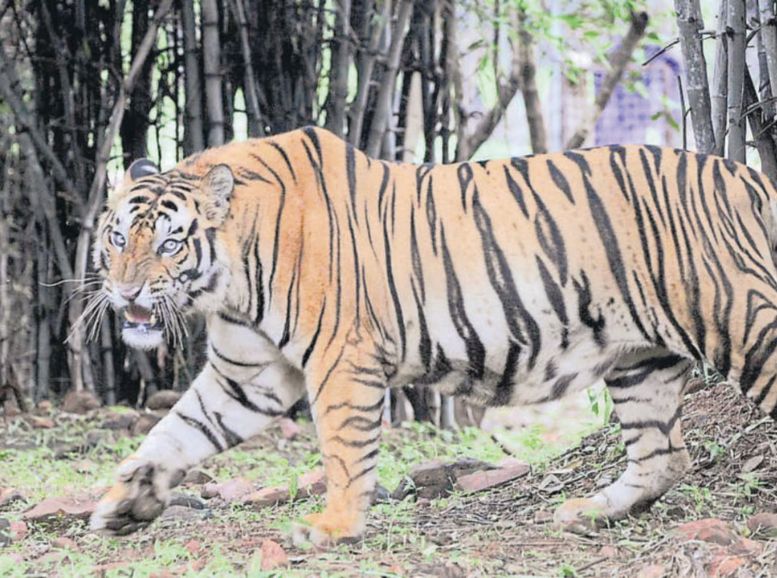
Valmiki National Park, the crown jewel of the Valmiki Tiger Reserve, plays a vital role in safeguarding Bengal tigers. Encompassing a diverse tapestry of ecosystems – from lush, moist deciduous forests to open savannahs and vibrant wetlands – this sprawling 880-square-kilometer reserve is a haven for a wide range of flora and fauna. Beyond the majestic Bengal tiger, the park teems with life – leopards prowl the undergrowth, gaur (Indian bison) graze majestically, and wild boars and primates add to the vibrant tapestry.
Gandak River:
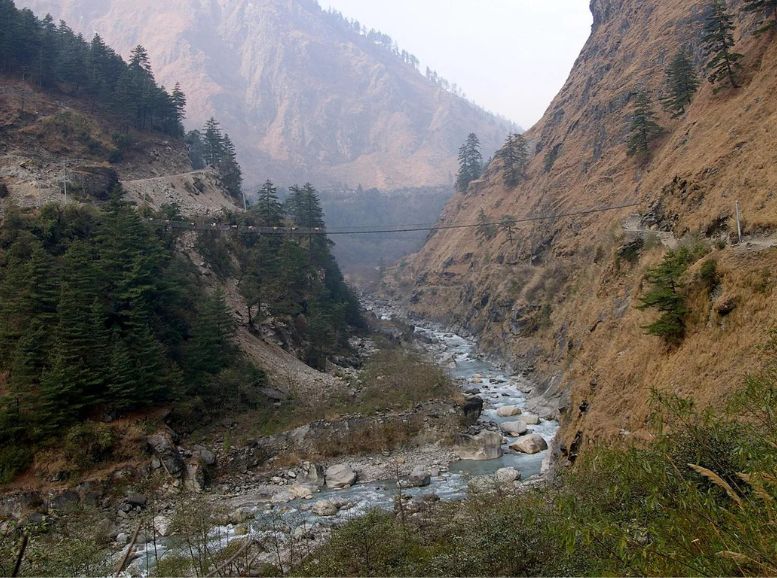
Valmiki National Park’s crown jewel, the Gandak River, weaves a path of liquid beauty and ecological significance. This meandering ribbon sculpts lush havens for wildlife – be it basking crocodiles or playful otters. Birders, take note! The vibrant riverbanks teem with resident and migratory birds, transforming the scene into a symphony of color and song. But the Gandak’s magic transcends its visual splendor. This serene haven beckons visitors seeking tranquility. Pack a picnic and soak in the water’s edge, or lose yourself in a nature walk.
Valmiki Ashram:
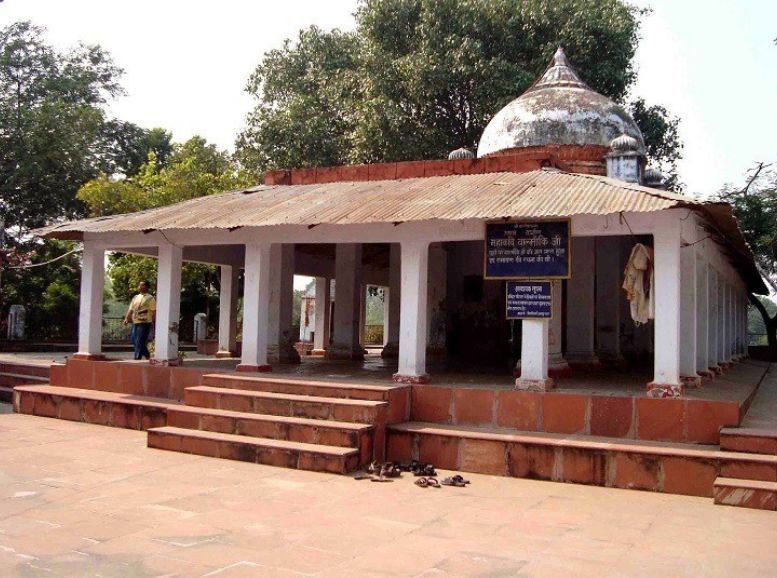
Veiled in legend and steeped in history, Valmiki Ashram, a revered site nestled within the park, whispers tales of the Ramayana’s composition by Sage Valmiki. Imagine a serene sanctuary carved from the forest, where tranquility reigns supreme. Pilgrims and tourists alike seek solace in the ashram’s spiritual embrace. Ancient structures stand as silent testaments to a rich cultural heritage, their inscriptions offering a glimpse into the past. A visit to Valmiki Ashram transcends a mere exploration of the park’s natural wonders; it’s a pilgrimage to connect with the historical and mythological roots of India, making it a truly enriching stop on your adventure.
Bird Watching at Valmiki National Park:
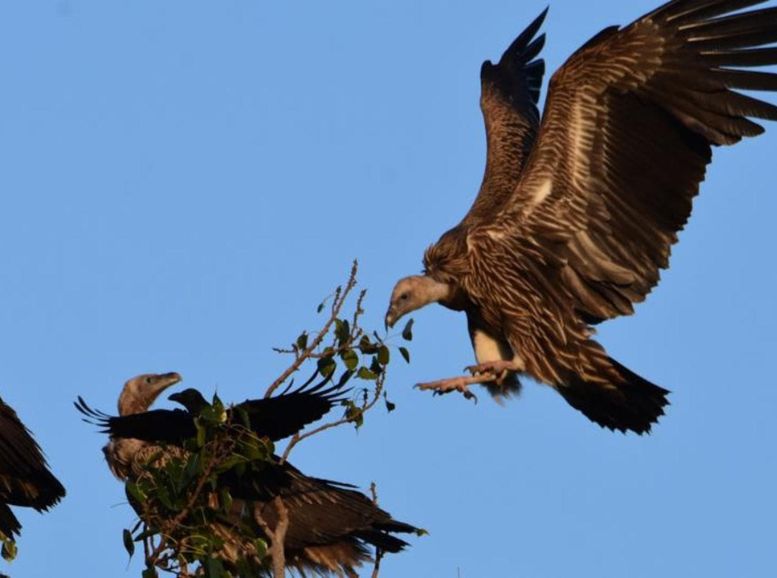
Valmiki National Park is a birdwatcher’s paradise, boasting over 250 avian residents. Forests, grasslands, and wetlands create a stage for this dazzling display, with each habitat attracting a unique chorus. Early mornings and late afternoons are the prime time to witness these feathered wonders in all their glory. Be captivated by the vibrant display of the Indian peafowl or the impressive casque of the Great Hornbill. Soaring eagles and watchful vultures might also grace your view. Winter further enriches the symphony as migratory birds flock to the park. Whether a seasoned birder or a casual observer, Valmiki National Park offers endless opportunities to witness and photograph these captivating creatures.
Manuabhan Ki Tekari:
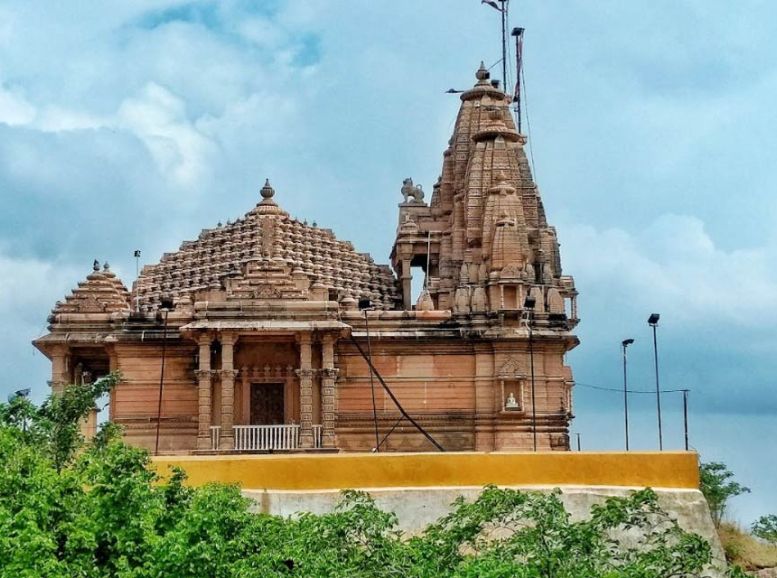
For a taste of tranquility within the vibrant Valmiki National Park, seek out Manuabhan Ki Tekari. This lesser-known gem offers a serene escape from the bustle. Imagine a tranquil haven perched atop a small hillock, unveiling breathtaking vistas of the surrounding forests and meadows. Pack a picnic and savor the peace, or simply lose yourself in quiet reflection. Nature’s artistry flourishes here, with a tapestry of native flora attracting a kaleidoscope of butterflies. Birdsong fills the air, adding to the idyllic ambience. A visit to Manuabhan Ki Tekari allows you to experience the quieter side of Valmiki National Park, appreciating its natural beauty at a leisurely pace.
Local Experiences:
Immerse in Tharu Culture: Witness vibrant music, dance, and folklore performances, gaining a firsthand understanding of the indigenous Tharu people’s way of life.
Walk a Legendary Path: Explore Valmiki Ashram, the ancient site believed to be the birthplace of the epic Ramayana.
Unearth Local Treasures: Discover hidden gems at bustling markets overflowing with handicrafts, local attire, and unique artifacts.
Tantalize Your Taste Buds: Embark on a culinary adventure, savoring the flavors of authentic Bihari cuisine and traditional Tharu delicacies offered at local eateries and guesthouses.
Delve Deeper with Eco-Guides: Join expert-led eco-tours, uncovering the park’s diverse flora and fauna while learning about ongoing conservation efforts.
Celebrate Local Spirit: Immerse yourself in vibrant festivals and fairs, experiencing the region’s rich cultural heritage firsthand.
Become a Local Artisan: Learn traditional crafts like pottery, weaving, and basketry through workshops or demonstrations, taking home a unique piece of the park’s cultural essence.
Unveil the Past: Explore historical sites and monuments, letting them whisper tales of the area’s captivating history.
Travel tips:
Do your research: Explore park attractions, accommodation options, and safari timings before your visit.
Time your trip: Consider the peak season (October to March) for optimal weather and wildlife sightings.
Permits & fees: Obtain any necessary permits and pay entry fees in advance to avoid delays.
Pack smart: Opt for light, breathable clothing suitable for the season. Comfortable shoes, a hat, sunscreen, and insect repellent are essential.
Stay healthy: Carry any medications you require and a basic first-aid kit. Stick to bottled or filtered water to avoid waterborne illnesses.
Respect wildlife: Maintain a safe distance from animals and follow your guide’s instructions during safaris.
Capture memories: Bring a camera with a zoom lens or binoculars for wildlife viewing. Be mindful of photography restrictions in sensitive areas.
Tread lightly: Follow park rules to minimize your environmental impact – no littering, feeding wildlife, or straying from designated paths.
Embrace the culture: Respect local customs and traditions. Learning a few basic phrases in Hindi or the local language can enhance your experience.
Safety first: Stay informed about weather conditions and potential risks. Share your itinerary with someone if venturing into remote areas.
Conclusion
Bihar unveils a hidden gem in Valmiki National Park, a sanctuary overflowing with enriching experiences. Lush forests teeming with vibrant wildlife beckon you on thrilling wildlife safaris. Hike to breathtaking viewpoints like Someshwar Hill, where panoramic vistas reward your efforts. Immerse yourself in the tranquility of the Gandak River, its serene flow a calming contrast to the park’s vibrancy. Delve deeper than the natural beauty and discover the park’s historical and spiritual significance. Seek solace at Valmiki Ashram, the revered site believed to be the birthplace of the epic Ramayana. Each encounter adds another layer to your journey, enriching your understanding of the region’s cultural heritage. Follow Xplro.com for more.
FAQs
What is Valmiki National Park known for?
- Valmiki National Park is renowned for its biodiversity and status as Bihar’s only tiger reserve. It houses diverse flora and fauna, including Bengal tigers, elephants, various deer species, and numerous bird species.
Where is Valmiki National Park located?
- Valmiki National Park is situated in the West Champaran district of Bihar, near the border with Nepal. It covers an expansive area of over 880 square kilometers.
What are the best months to visit Valmiki National Park?
- The optimal time to visit Valmiki National Park is from October to March, characterized by pleasant weather and optimal wildlife sightings. This period also coincides with the migratory bird season, making it ideal for birdwatchers.
How can I reach Valmiki National Park?
- You can access Valmiki National Park by air via Patna’s Jay Prakash Narayan International Airport or Gorakhpur Airport, followed by a road journey. Alternatively, you can travel by train to Valmiki Nagar railway station and then take local transportation to the park.
What activities can I do at Valmiki National Park?
- Visitors can engage in wildlife safaris (jeep and elephant), birdwatching, trekking to Someshwar Hill, exploring Valmiki Ashram, and experiencing the local Tharu culture. The park also offers opportunities for nature walks, picnics, and photography.
Are there accommodations available at Valmiki National Park?
- Yes, there are forest rest houses and eco-tourism lodges within Valmiki National Park where visitors can stay. It’s advisable to book accommodations in advance, particularly during peak tourist seasons.
What wildlife can I expect to see at Valmiki National Park?
- Wildlife sightings at Valmiki National Park include Bengal tigers, leopards, Indian bison (gaur), sambar deer, spotted deer, wild boars, and a diverse array of bird species, both resident and migratory.
Is Valmiki National Park safe for tourists?
- Valmiki National Park is generally safe for tourists when visiting with authorized guides and adhering to park regulations. It’s essential to respect wildlife and exercise caution during safaris and nature walks.
Can I visit Valmiki National Park with children?
- Yes, Valmiki National Park is suitable for visits with children, especially older kids who can appreciate wildlife and nature activities. Families should ensure children follow safety guidelines during wildlife encounters and park activities.
What should I pack for a trip to Valmiki National Park?
- Essential items to pack include light, breathable clothing suitable for the season, sturdy walking shoes, insect repellent, sunscreen, a hat, binoculars or a camera for wildlife viewing, and any necessary medications.
Are there local guides available at Valmiki National Park?
- Yes, knowledgeable local guides familiar with the park’s flora, fauna, and trails are available for hire. They provide valuable insights and ensure a safe and informative wildlife experience.
Are there any cultural attractions near Valmiki National Park?
- Yes, in addition to its natural beauty, Valmiki National Park offers cultural attractions such as Valmiki Ashram, where Sage Valmiki is believed to have composed the Ramayana. Visitors can also engage with the local Tharu community to learn about their traditions and customs.





